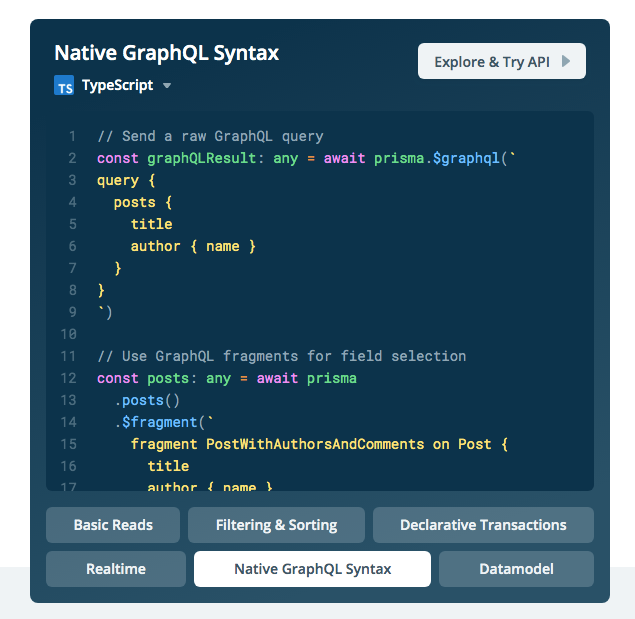

- #Graphql as a universal database abstraction install#
- #Graphql as a universal database abstraction software#
- #Graphql as a universal database abstraction download#
Users must read through documentation, create an account on a third-party site and download an SDK to call the service in their preferred language. On the other hand, the API integration is very cumbersome.
#Graphql as a universal database abstraction install#
For example, installing a package like React.js is as simple as initiating the command npm install react within Terminal. This virtual graph offers a common integration language to interact with various API styles, whether REST, GraphQL, gRPC or webhook, in a GraphQL-like manner.Ĭonsider the ease with which package managers like npm enable developers to instantly install dependencies. The Next Evolution of a Virtual GraphĪnother potential benefit of using GraphQL as an intermediary is combining APIs a “virtual graph,” as Neuse calls it. “GraphQL can be very valuable, even in small environments,” said Neuse. Thus, the scalability issue isn’t so much an issue of size but of access. “Not exposing GraphQL directly but ‘compiling’ it to a JSON-RPC API when deploying solves these problems.” “The issue is that using the query language comes with a cost,” Neuse said. Such a process could also enact universal policies on a per-function basis, thus solving potential authorization issues when fetching data from multiple backend services with a single query.

In fact, most GraphQL APIs are not public.

Other companies, like Twitter and Airbnb, use a similar abstracted approach to interact with a private GraphQL. Functions name GraphQL, sure, but they call it more implicitly.

Open up Developer Tools in Chrome, and you’ll see there is not a single mention of a root HTTP endpoint like. Interestingly, if we look at Facebook’s use of GraphQL, we see these endpoints are not exposed to the public web at all. (This is not to be confused with their public Graph API). Why GraphQL Shouldn’t be Exposed Publiclyįacebook, the creator of GraphQL, uses an internal GraphQL API to power all of its apps across Android, iOS and web browsers.
#Graphql as a universal database abstraction software#
We’ll also uncover what open source software is on the horizon that could power this setup. Using GraphQL as an internal integration layer could also help combine disparate APIs into a similar language, exposing GraphQL-like usability for frontend developers while allowing them to hit any API style on the backend.īelow, we’ll consider the drawbacks of exposing GraphQL directly and see how an intermediary layer could benefit development. Such an intermediary would enable more implicit calls and proper authentication and authorization for specific underlying functions and resources. Instead, he advocates for interacting through a gateway. To Neuse, the core problem is that GraphQL is not meant to be exposed over the internet. According to Jens Neuse, CTO, WunderGraph, there is a simple way to mitigate most of these issues and harmoniously work with various API styles.


 0 kommentar(er)
0 kommentar(er)
